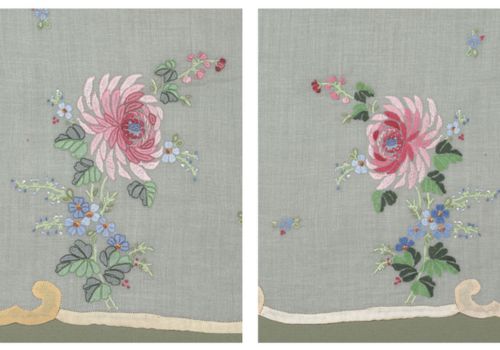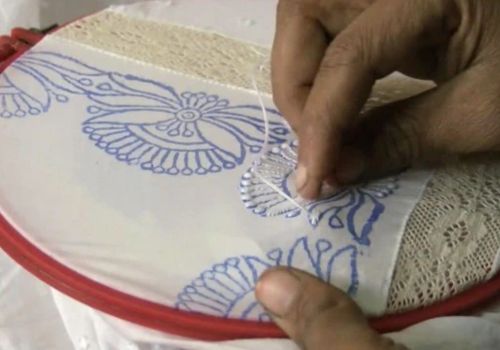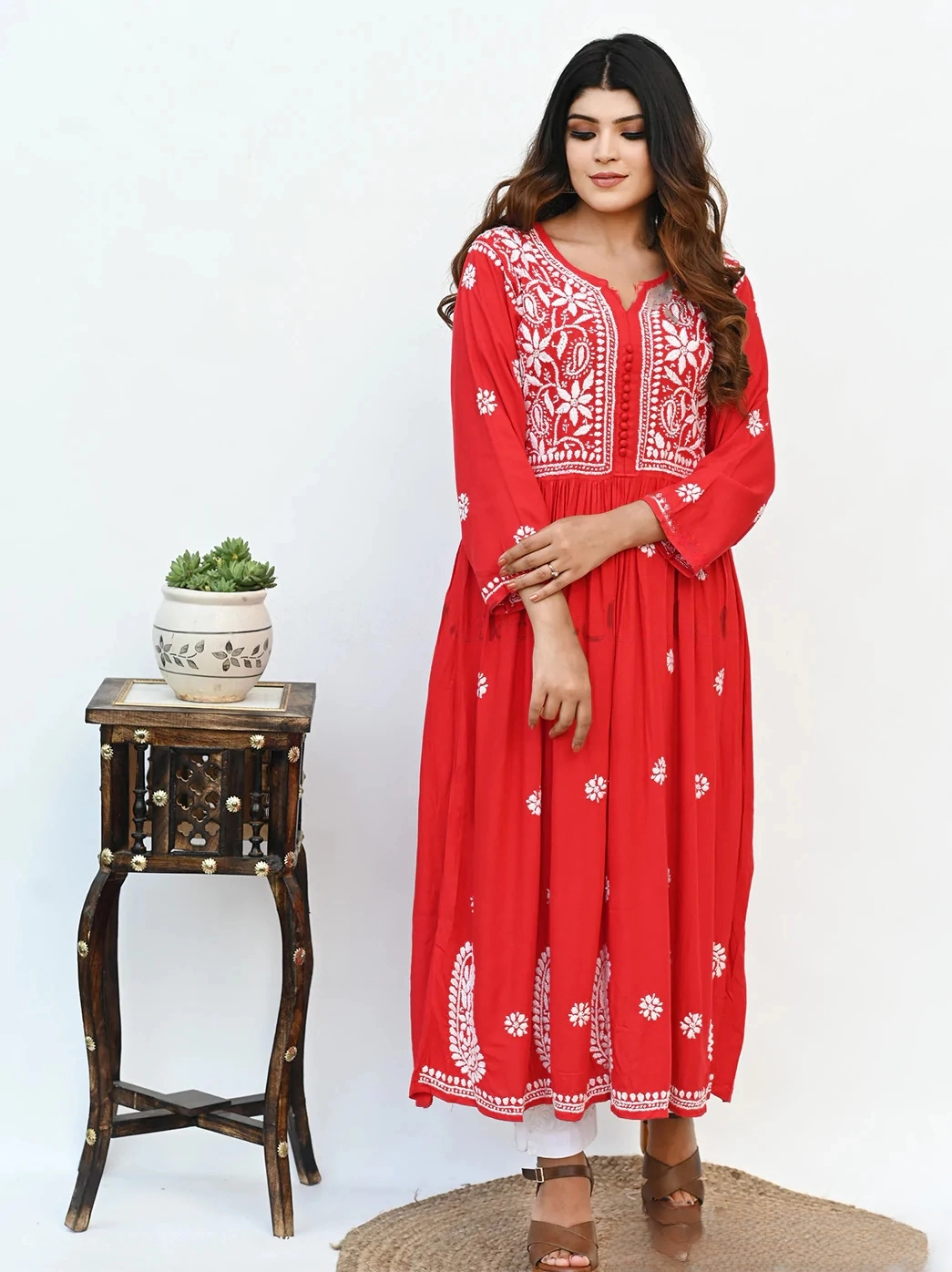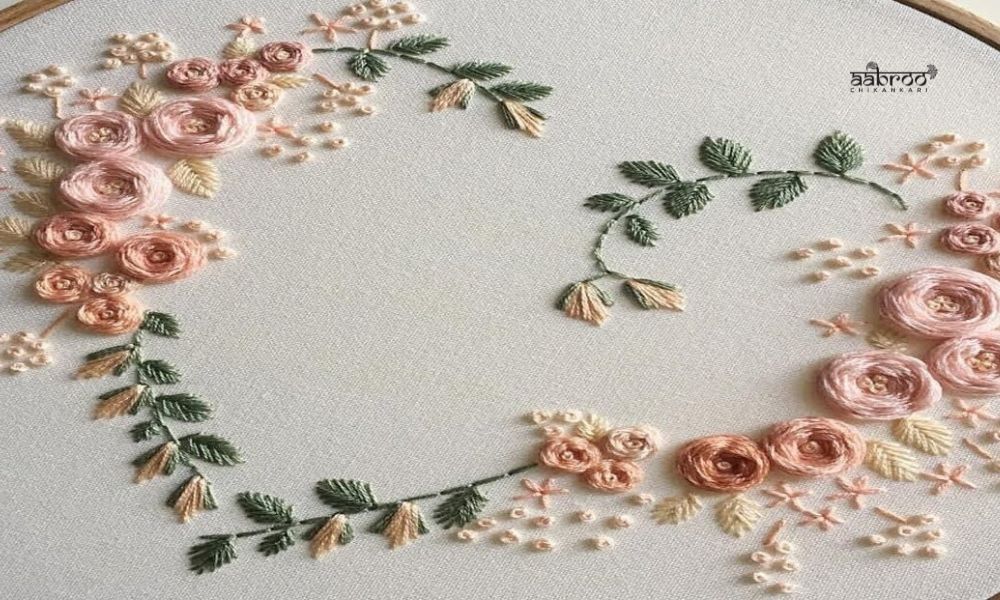In the art form of Chikankari, there are several ways to create beautiful designs over the fabric. As with the method of work, artisans use the same method of stitching embroidery in unique designs. However, the technique of stitches may differ to create different designs of Chikankari.
Originally, there were more than 30 types of Chikankari stitches. Some of the popular designs of Chikankari stitches include – bakhiya, tepchi, jaali, zanzeera, phanda, murri, turpai, etc. An artisan may apply to any of these or a few combinations of stitches designed in the Chikankari-making process.
Read Also: Chikankari & It’s Tradition in Lucknow
Patterns of Design in Chikankari Embroidery

Every piece of Chikankari work, whether it’s a kurta, suit, or dress material, they are set to have different designs and patterns. Most likely, the artisans apply those beautiful designs that look good in combination with other Chikankari stitch patterns.
Those who are aware of the needlecraft work of Chikankari, they must know that specific tools are necessary. Let’s say an artisan will be stitching a beautiful “bakhiya kadhai” pattern on cotton fabric. To fulfill the task, you will be required – a fabric (cotton or silk), threads, a needle, and a frame to hold the material in place.
What is Shadow Embroidery?

While you may be wondering about the different stitching patterns of Chikankari, let’s say that Shadow embroidery is one that’s very famous. In terms of Chikankari, “Shadow Work” Chikankari is easily read as “bakhiya” kadhai in the urdu language.
Unlike other designs of Chikankari work, bakhiya or shadow embroidery is a simple yet elegant technique. In this type of Chikankari work, the artisan will be required to use the following items –
- Thin Fabric Material
- Light color threads
- Needle
- The frame (to hold the cloth in place)
The actual technique of creating bakhiya (shadow embroidery) is to stitch the thread from underneath. Likewise, the stitches go on the back side of the fabric in the herringbone design, and when you turn it over, there’s a beautiful shadow on the front. In addition, the most important thing about shadow embroidery is that it must be on a thin fabric like – muslin or georgette.
See Also: Types of Chikankari Designs
Use of Thread & Needle in Shadow Work Chikankari

Once you have chosen a thin fabric material with light color, now you have to select the thread colors. In some designs, the artisans may use 2 to 3 colors of thread, while many may go for White Embroidery Work. Needless to say, white Chikankari on white fabric is a traditional form of art.
Now, the work of shadow embroidery is all about fine needle and stitchwork. Also, make sure the thread is also of fine material so that it does not damage the thin cloth material. Instead of choosing cotton threads, the artisan may select a silk thread. It may easily penetrate through the fabric with the help of a needle.
Guidelines for Shadow Embroidery (Shadow Work Chikankari)
- It is better to use single or double threads for shadow embroidery on Chikankari.
- Usually, this technique is feasible to draw small and medium size patterns of flowers and leaves.
- White thread on white fabric is a highly classy option as it gives a better look to the overall material.
- You can also choose other combinations of designs along with shadow work to give a defined look.
Bottom Line
Just like shadow work chikankari(shadow embroidery), there are many such beautiful patterns of Chikankari. You can learn about them and purchase the one that goes to your taste!
At Aabroo Chikankari, we have different designs of Chikankari work that are highly attractive. Now, you can purchase Lucknowi Chikankari online at a reasonable price and an easy mode of delivery.
Related Articles:
Chikankari VS. Lucknowi Chikankari
Embroidery & Needle Work: Best Chikankari Handicraft

